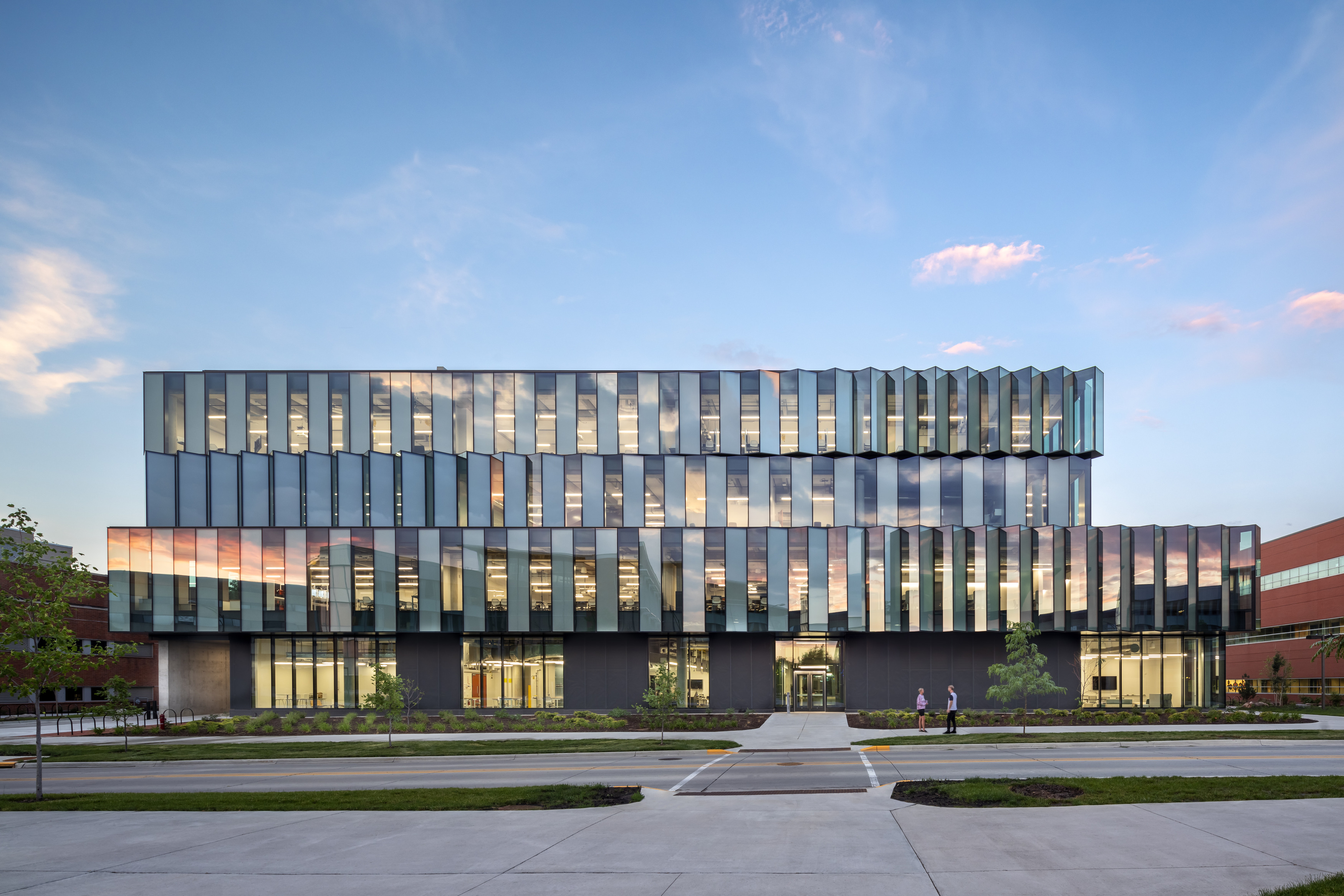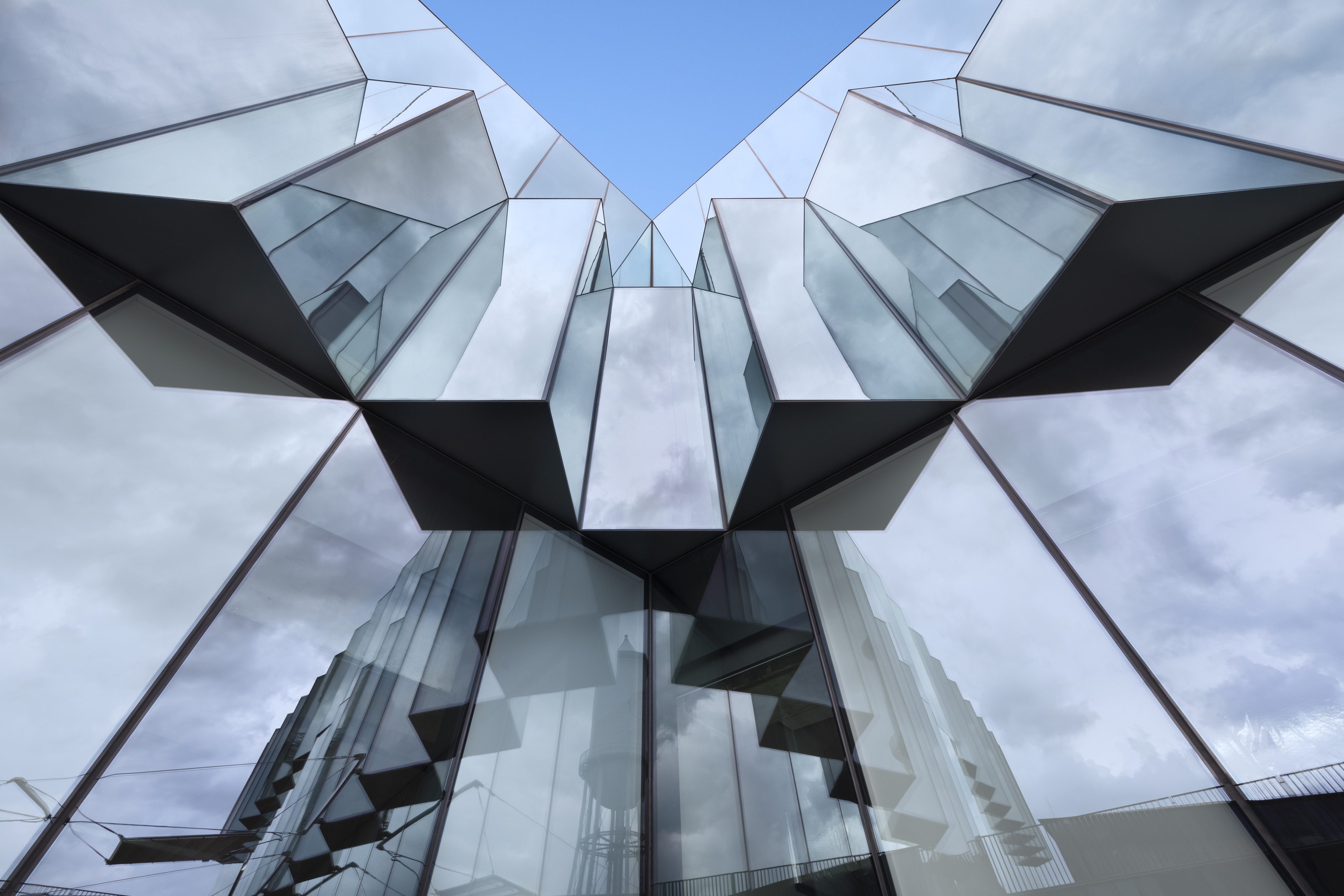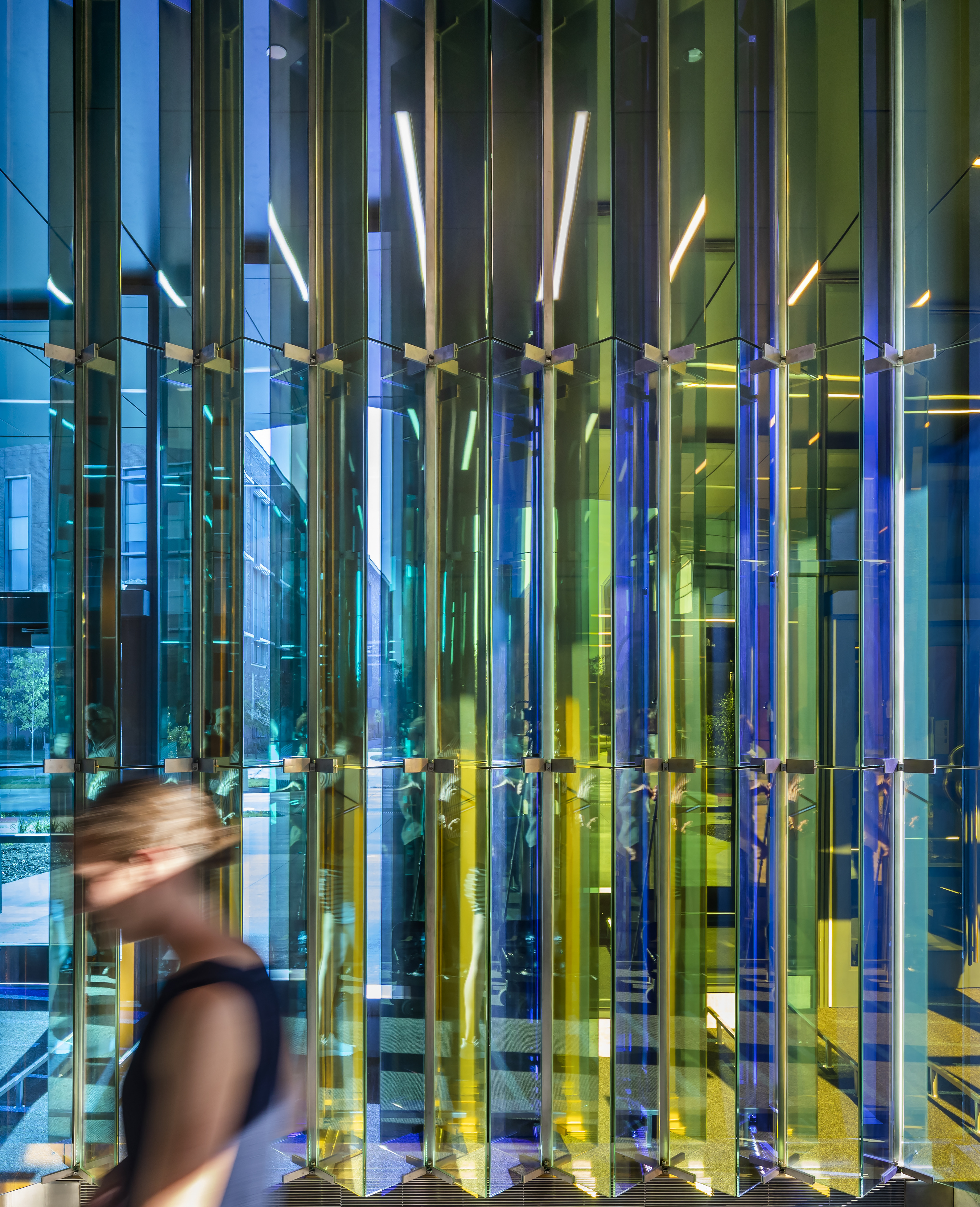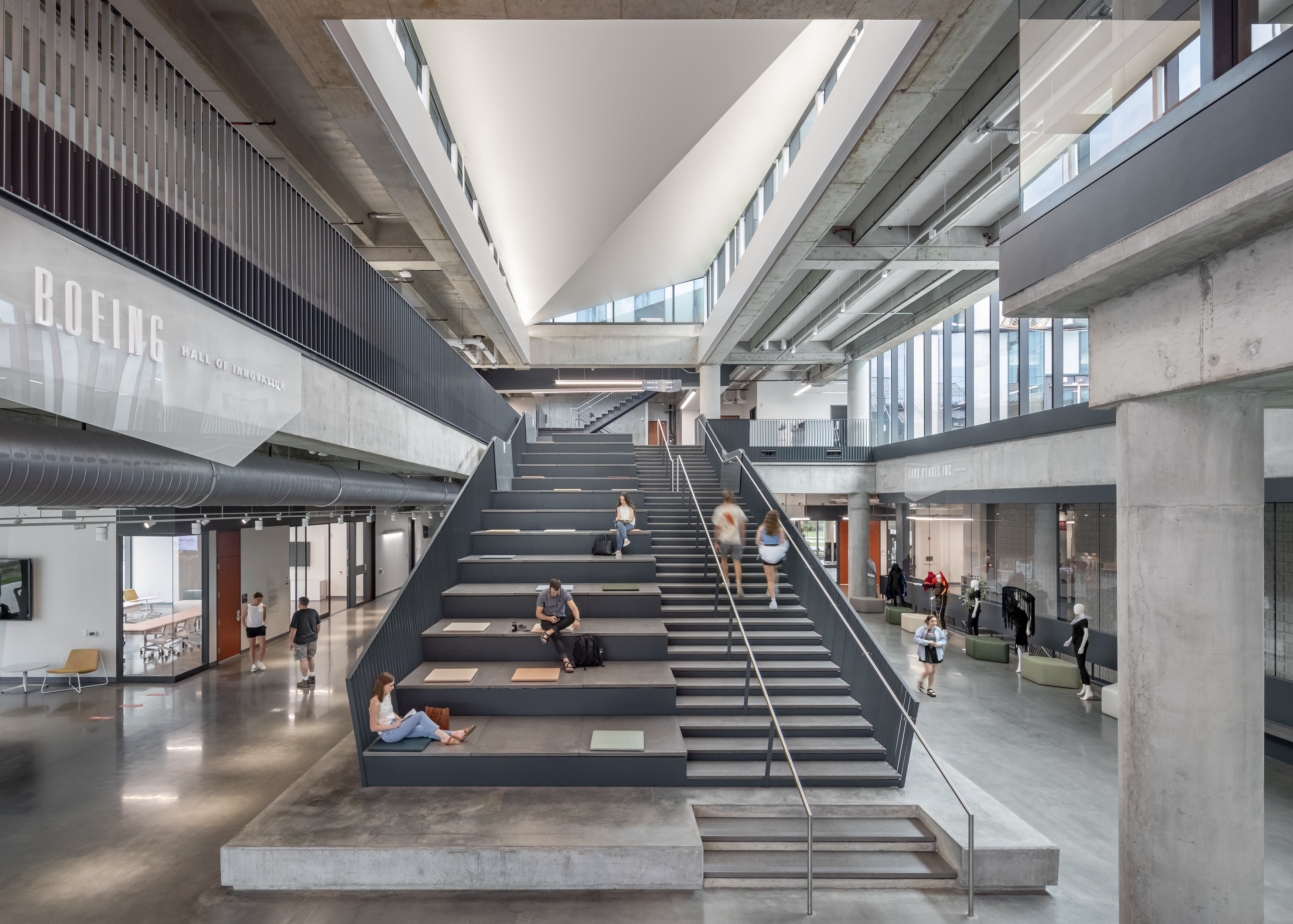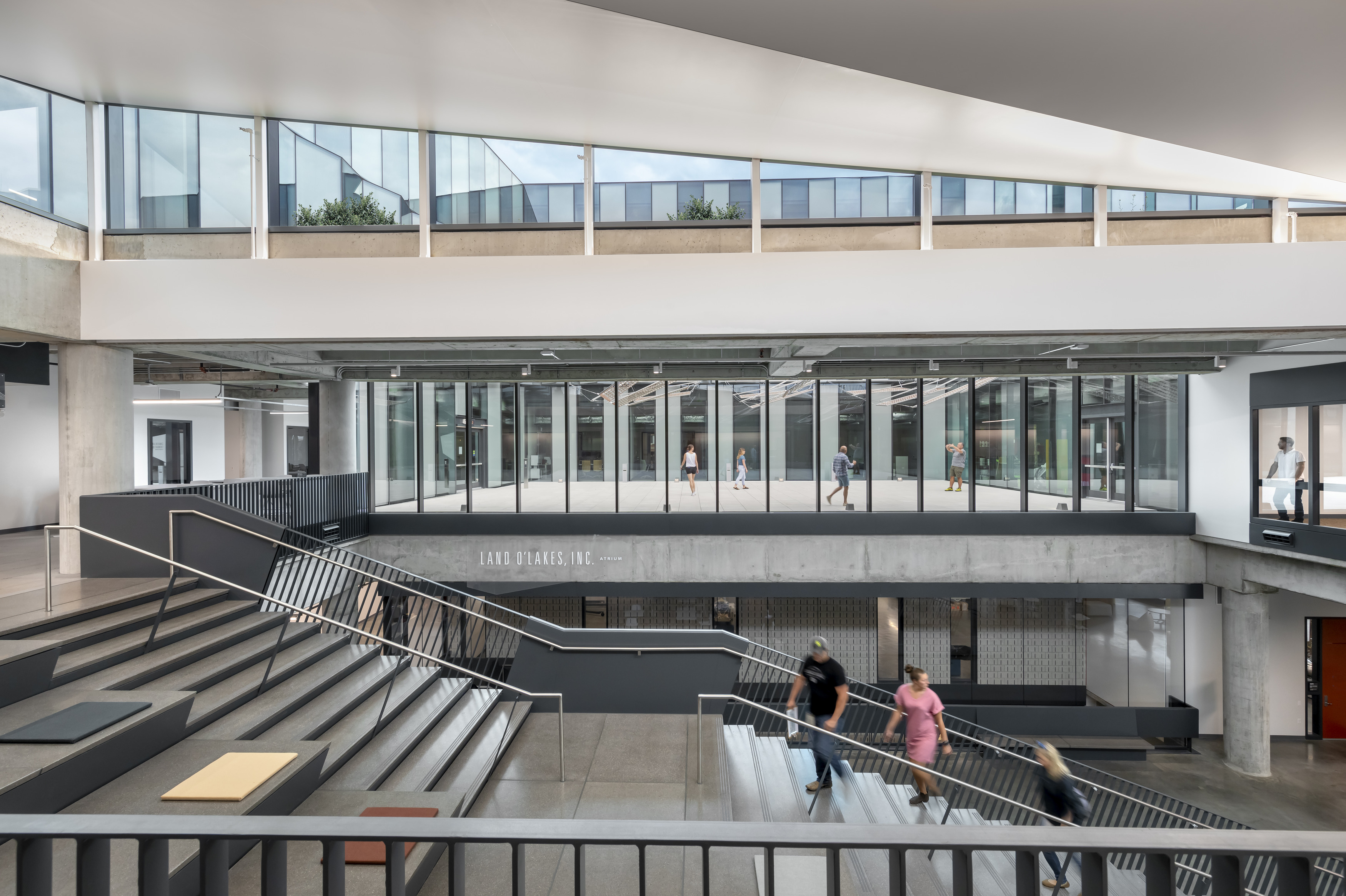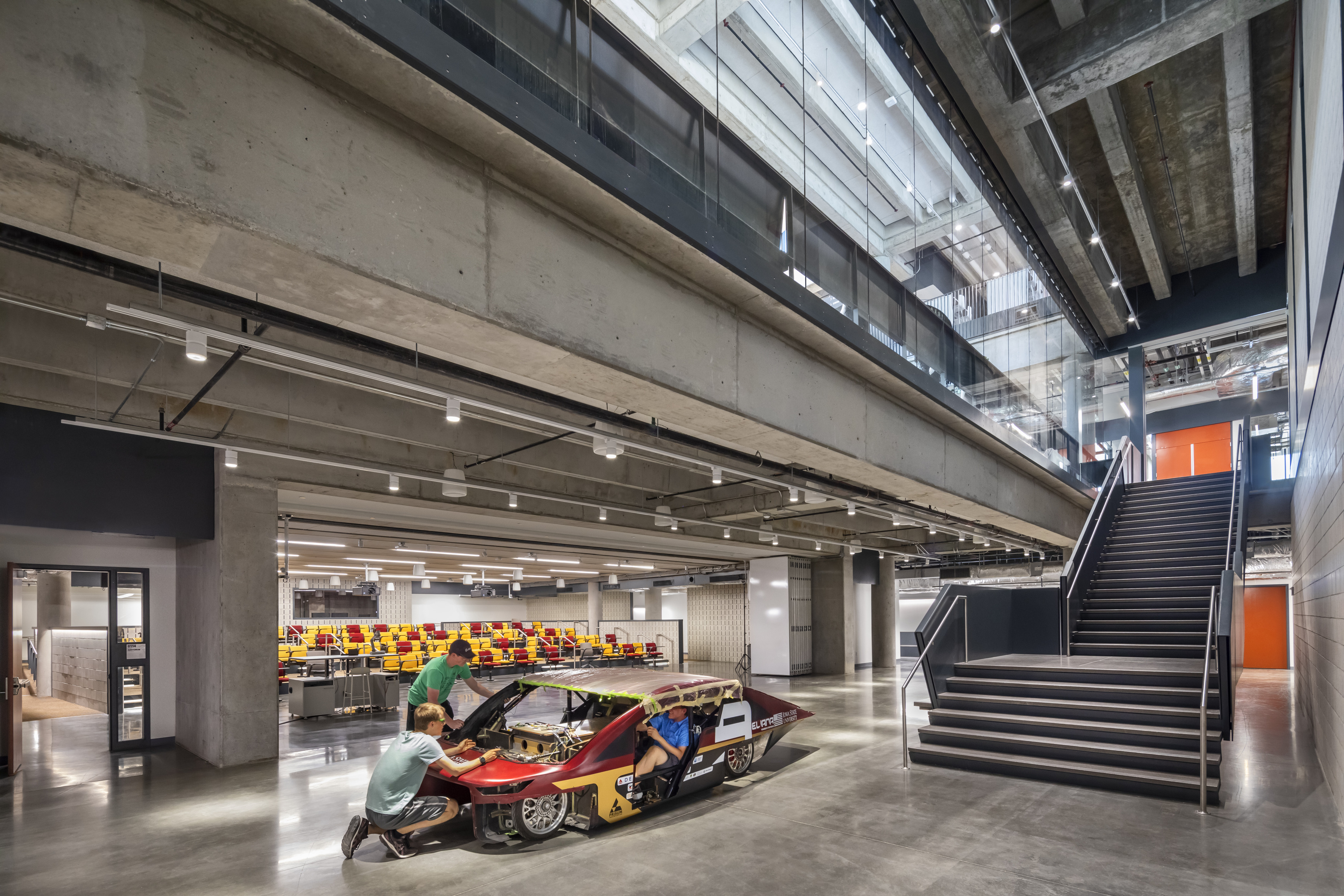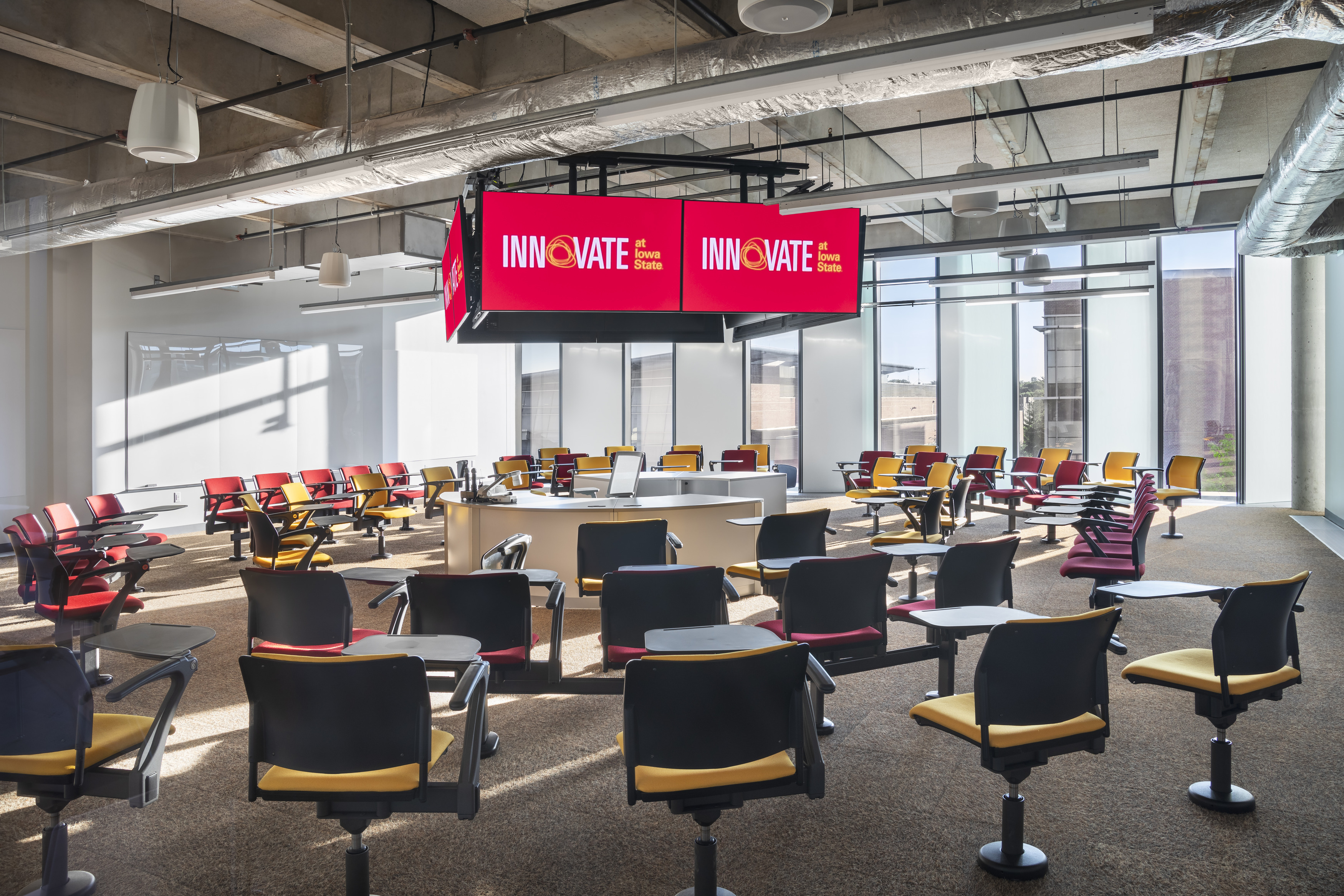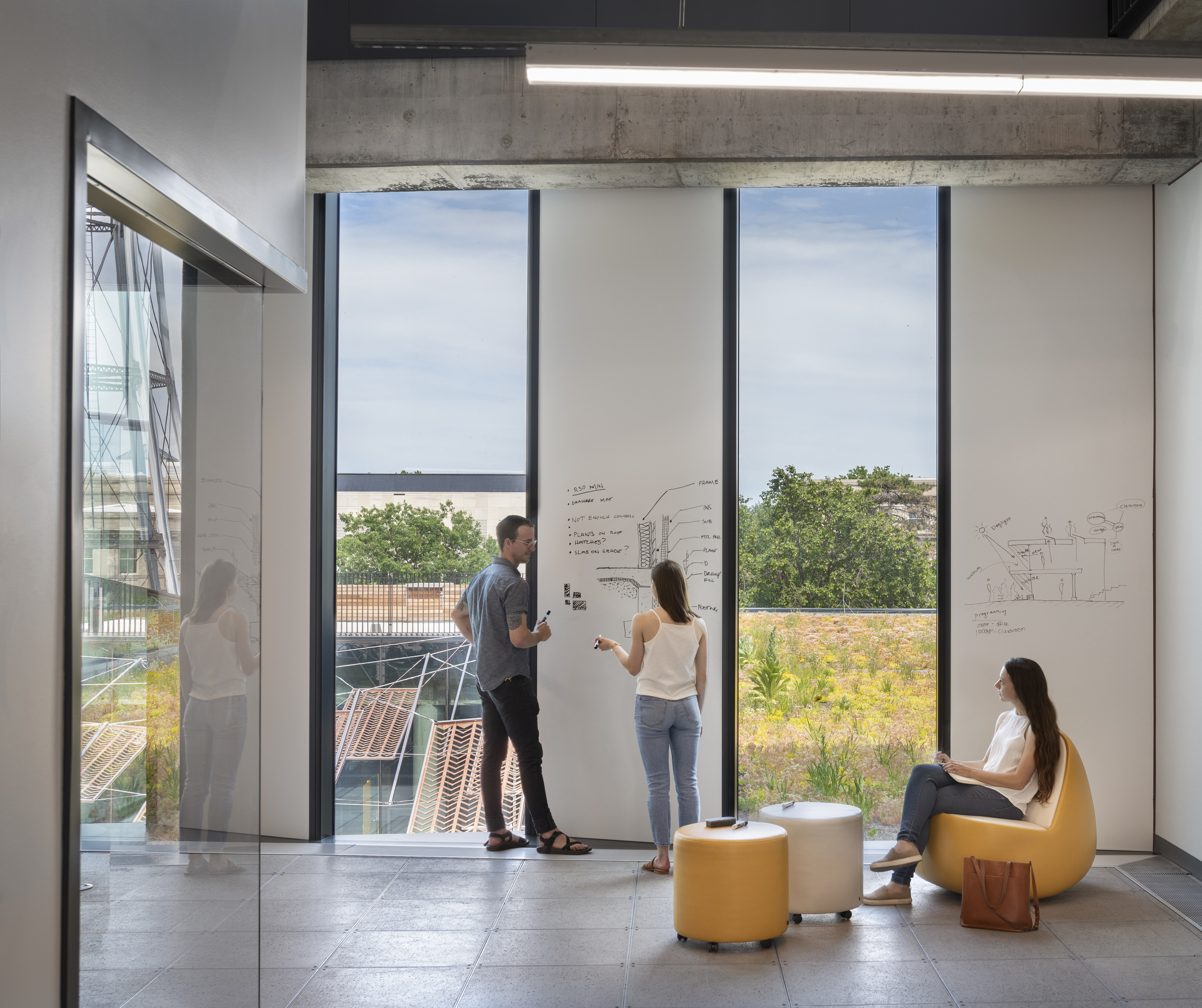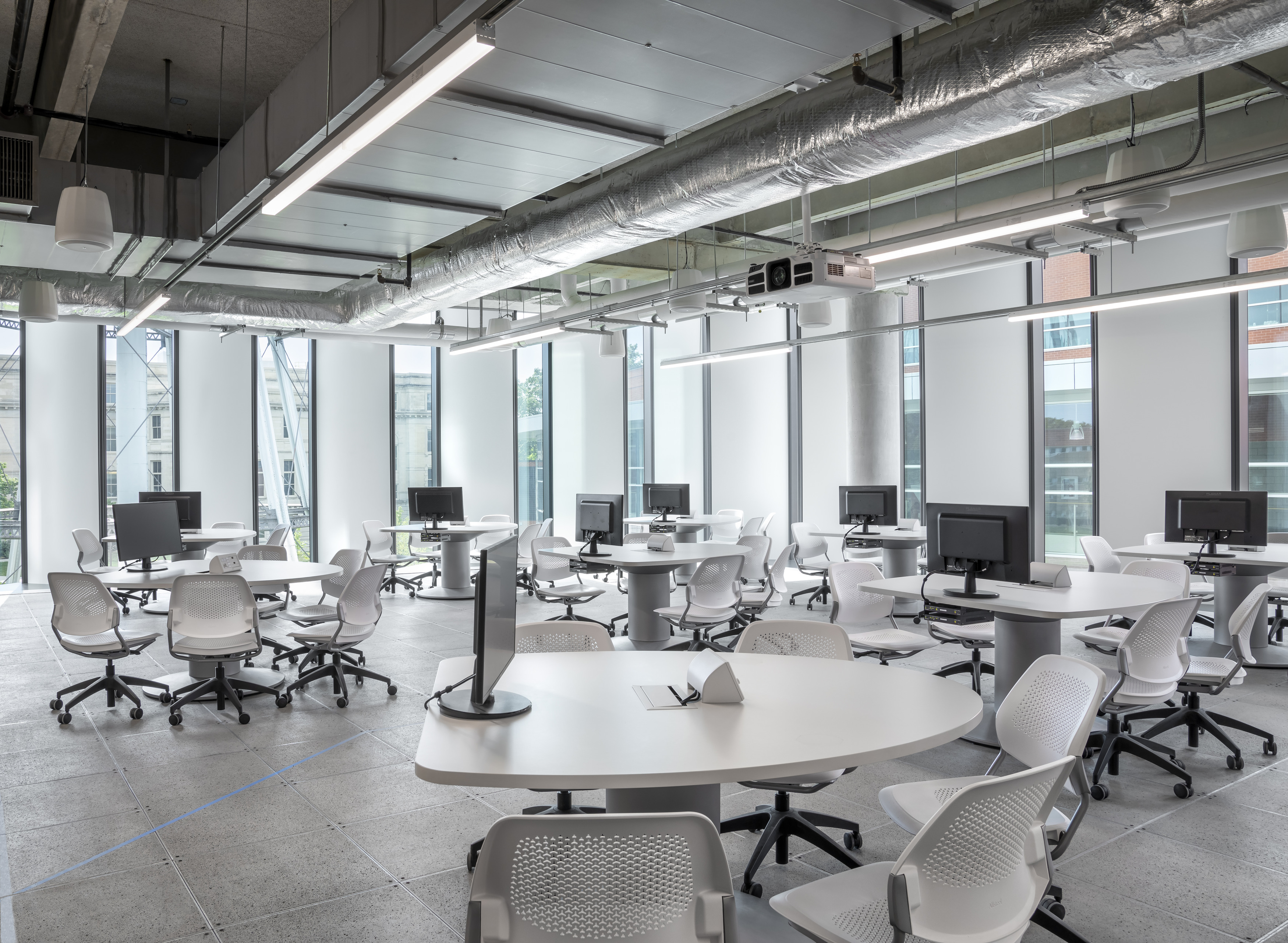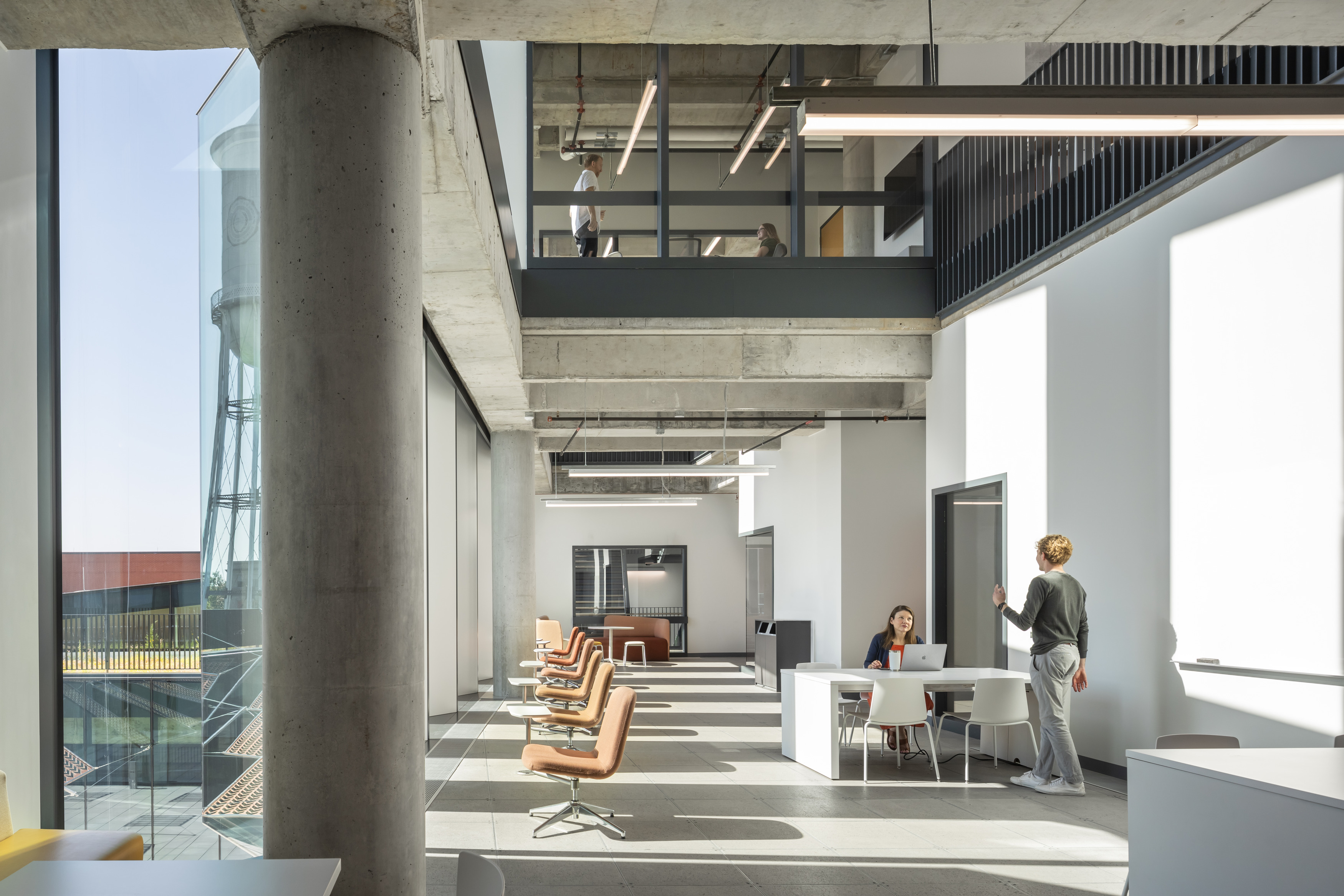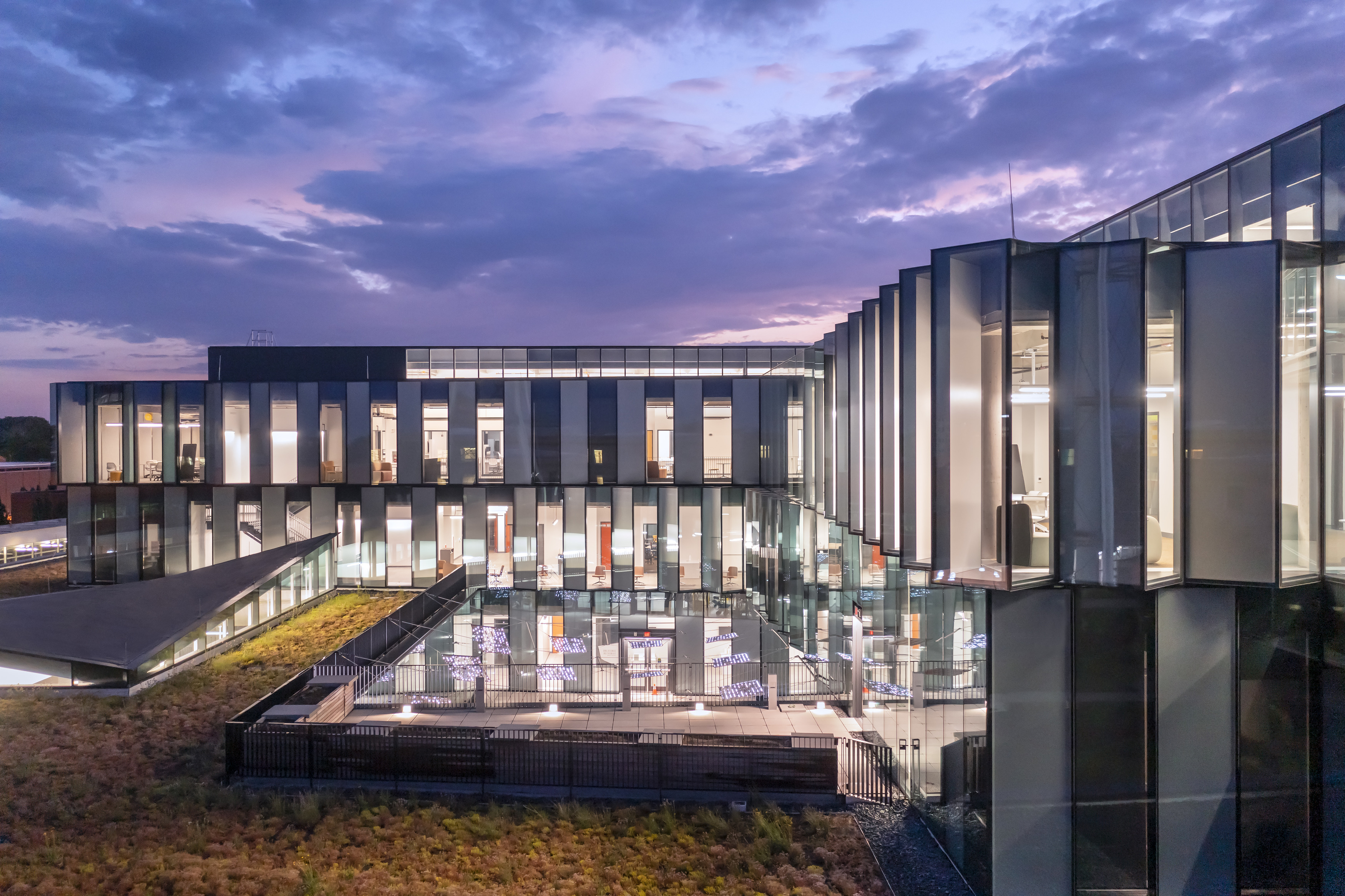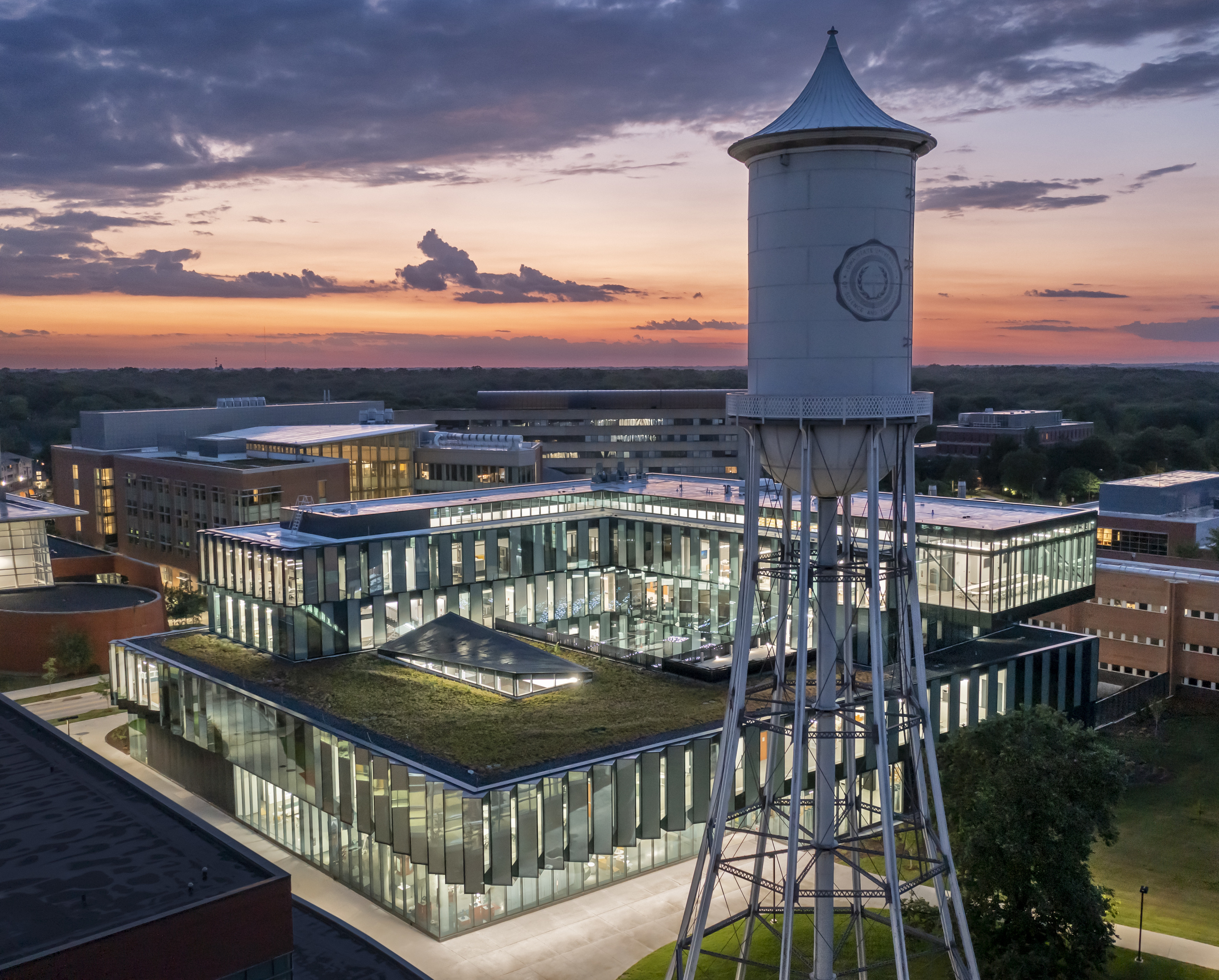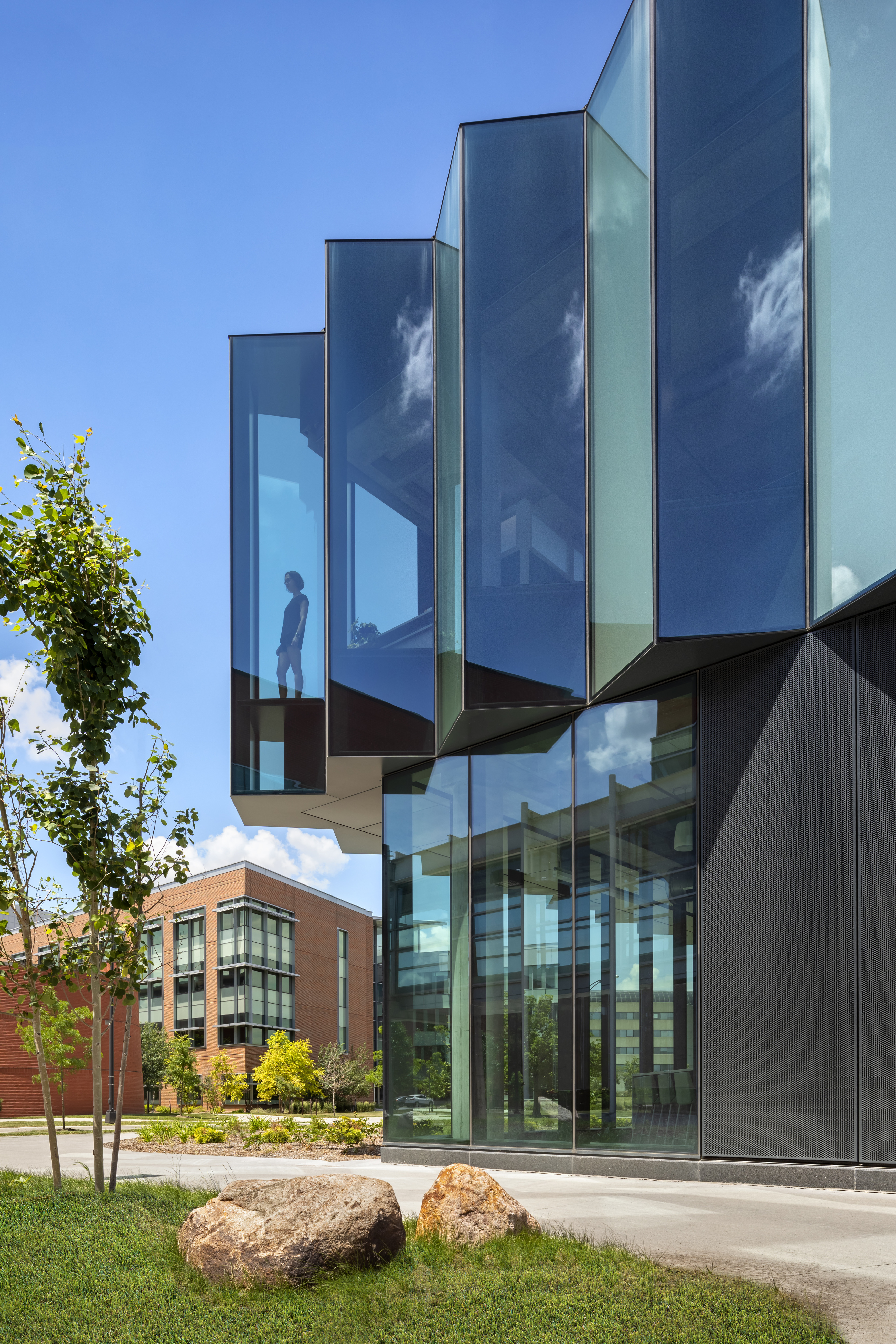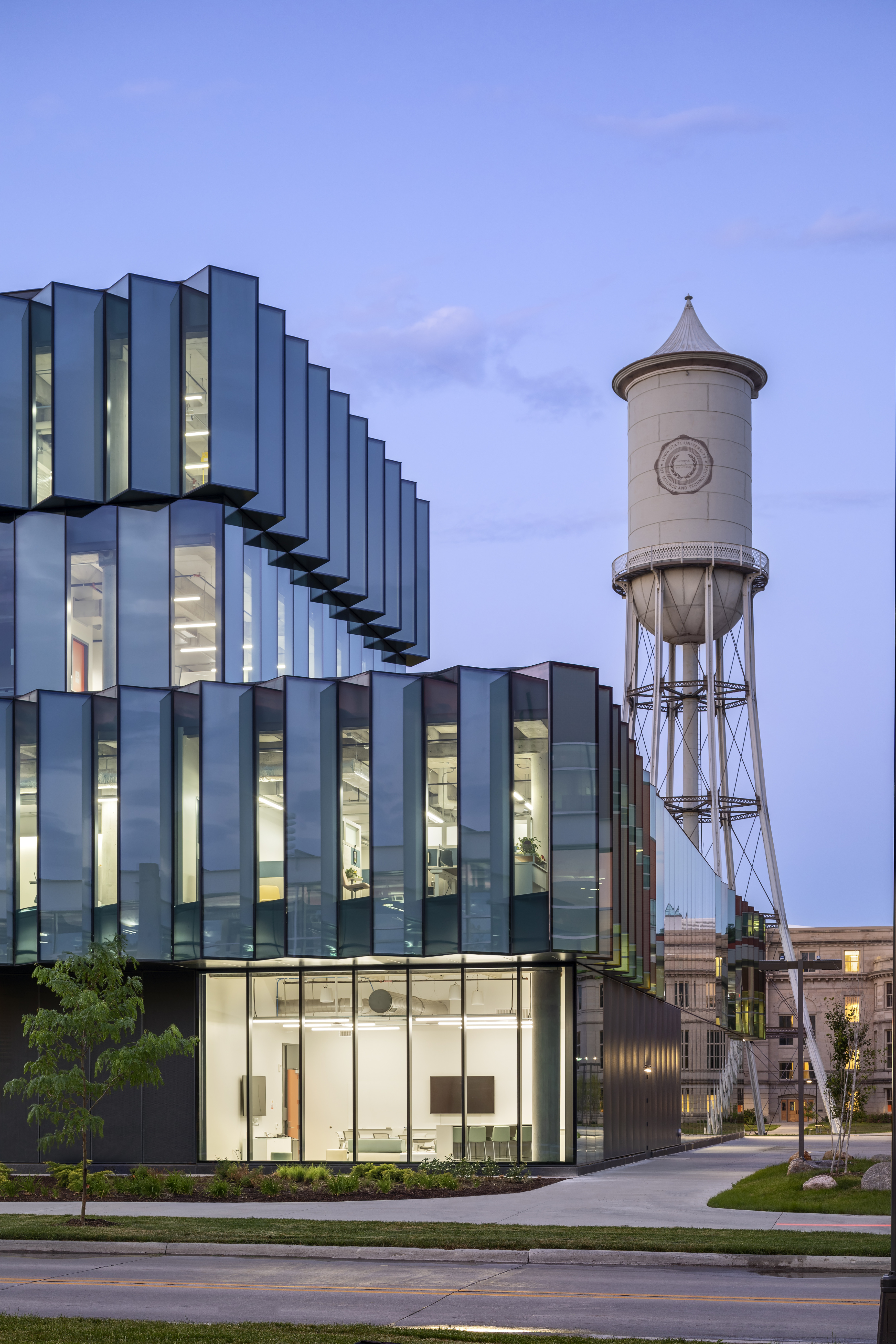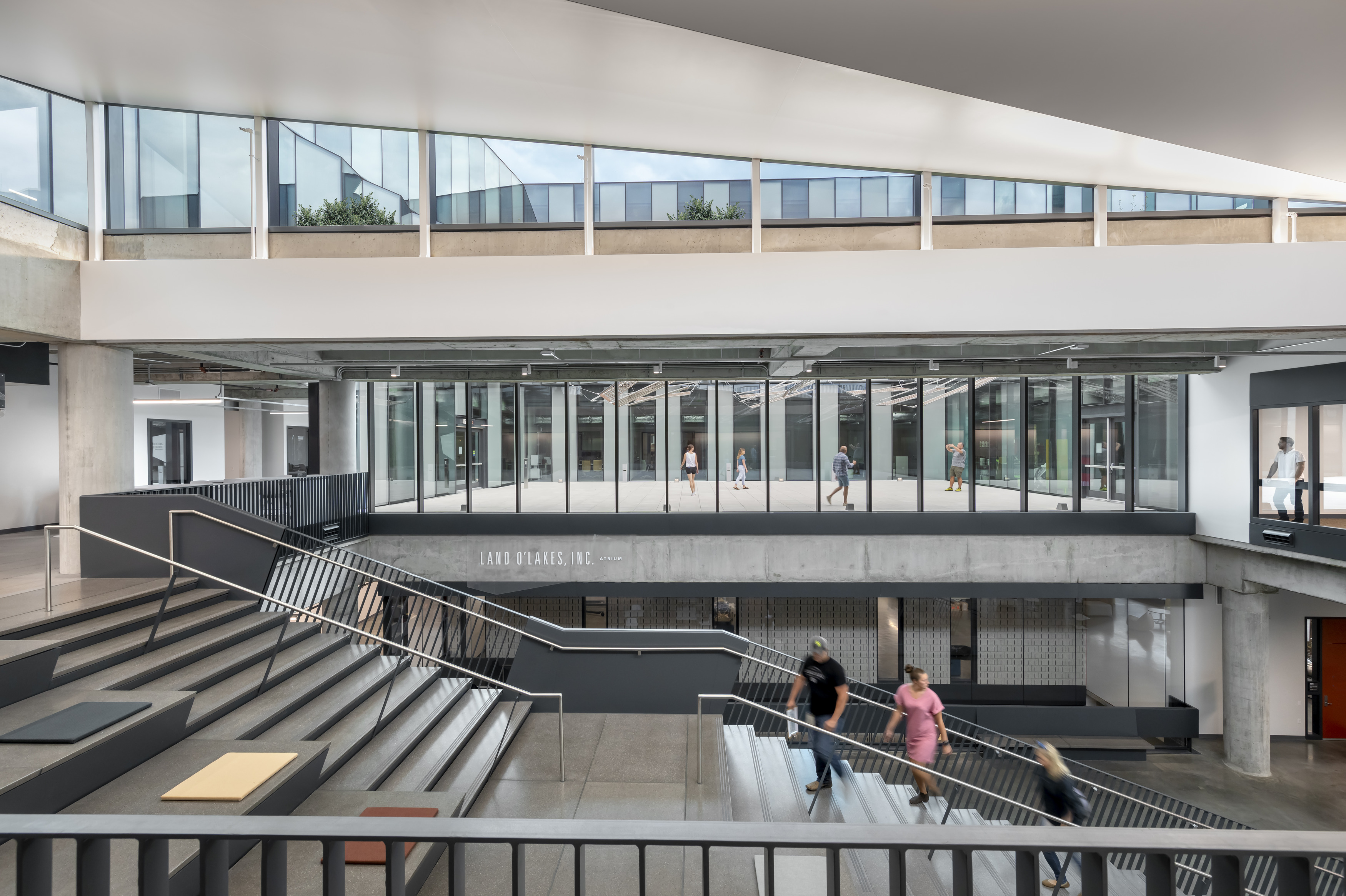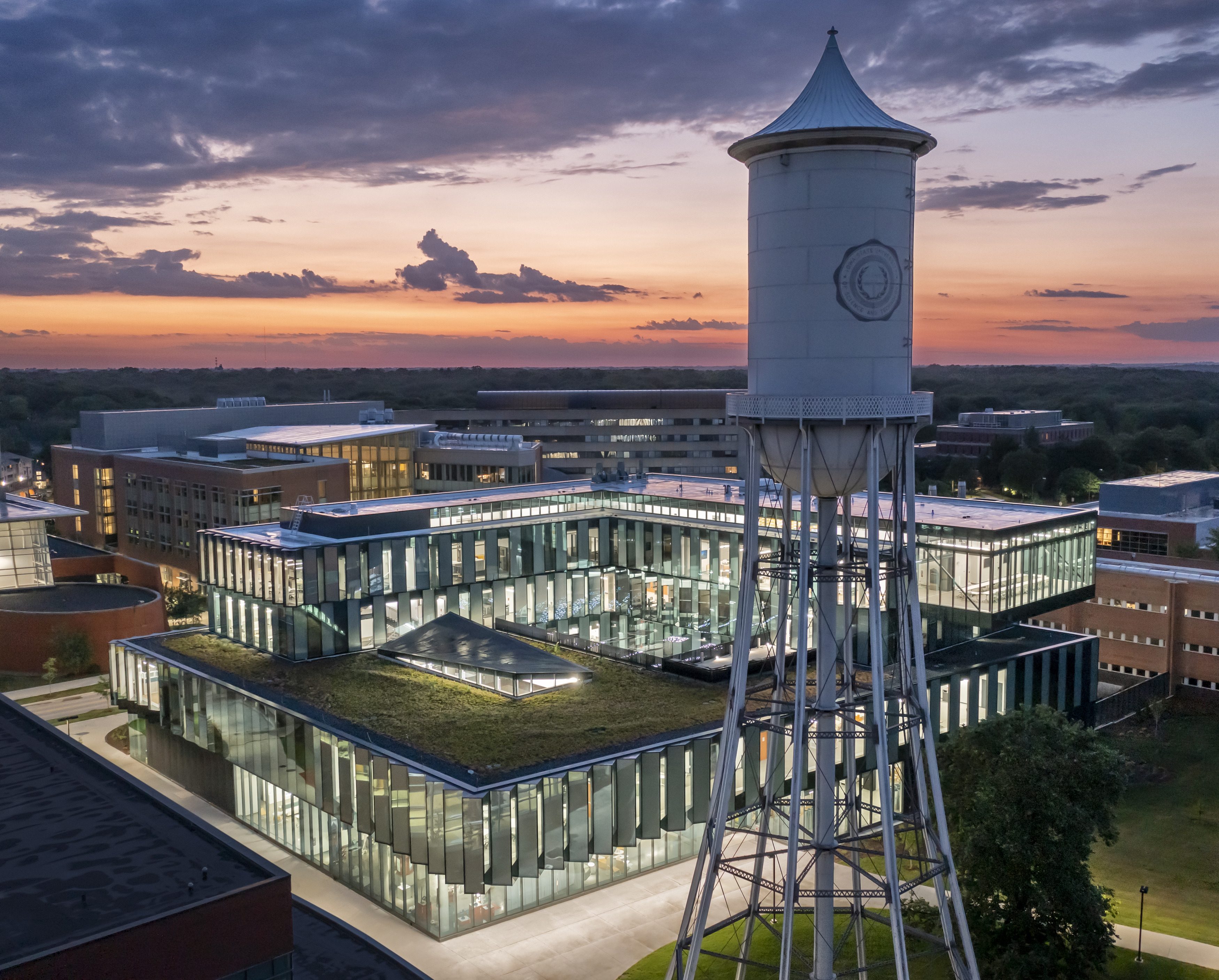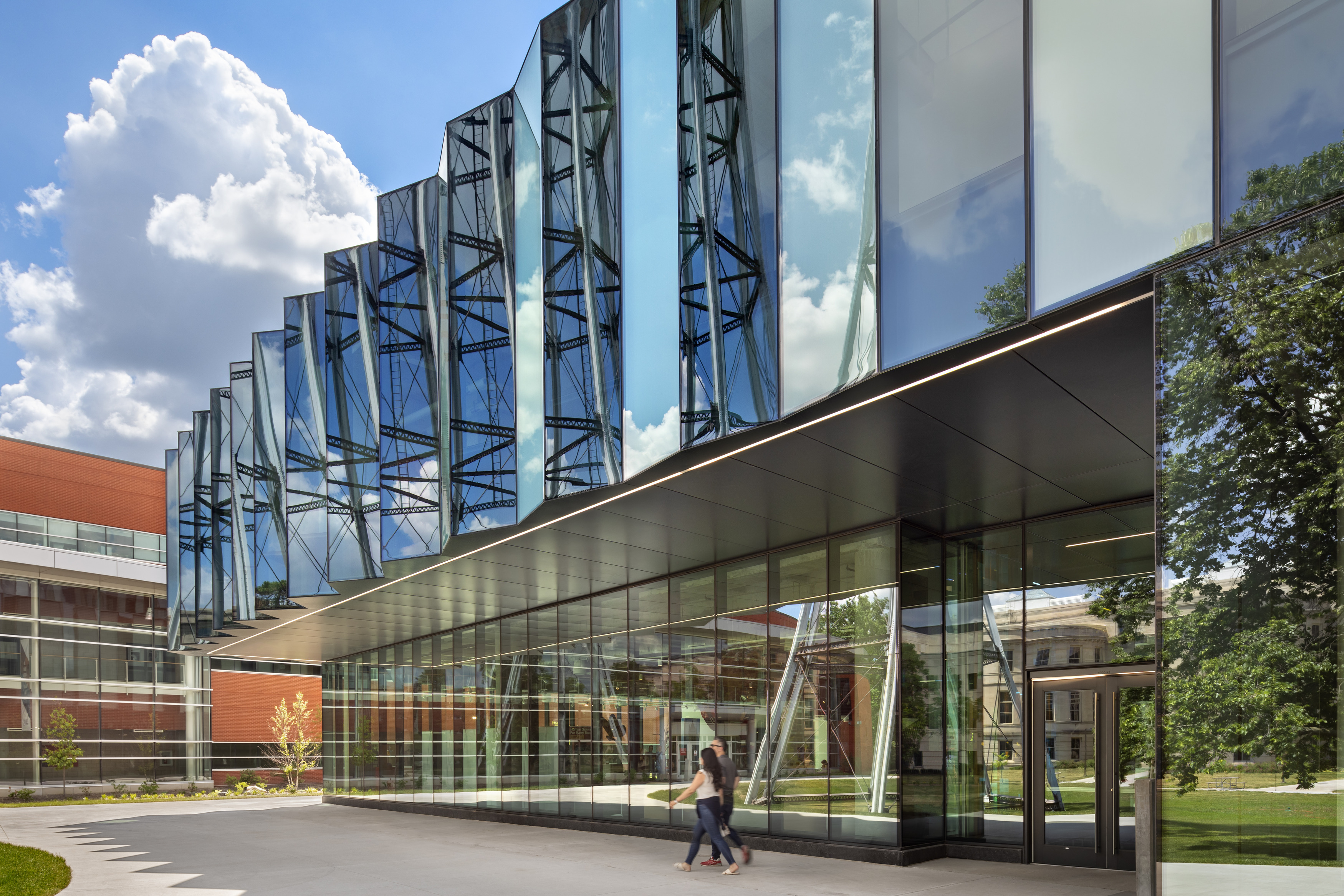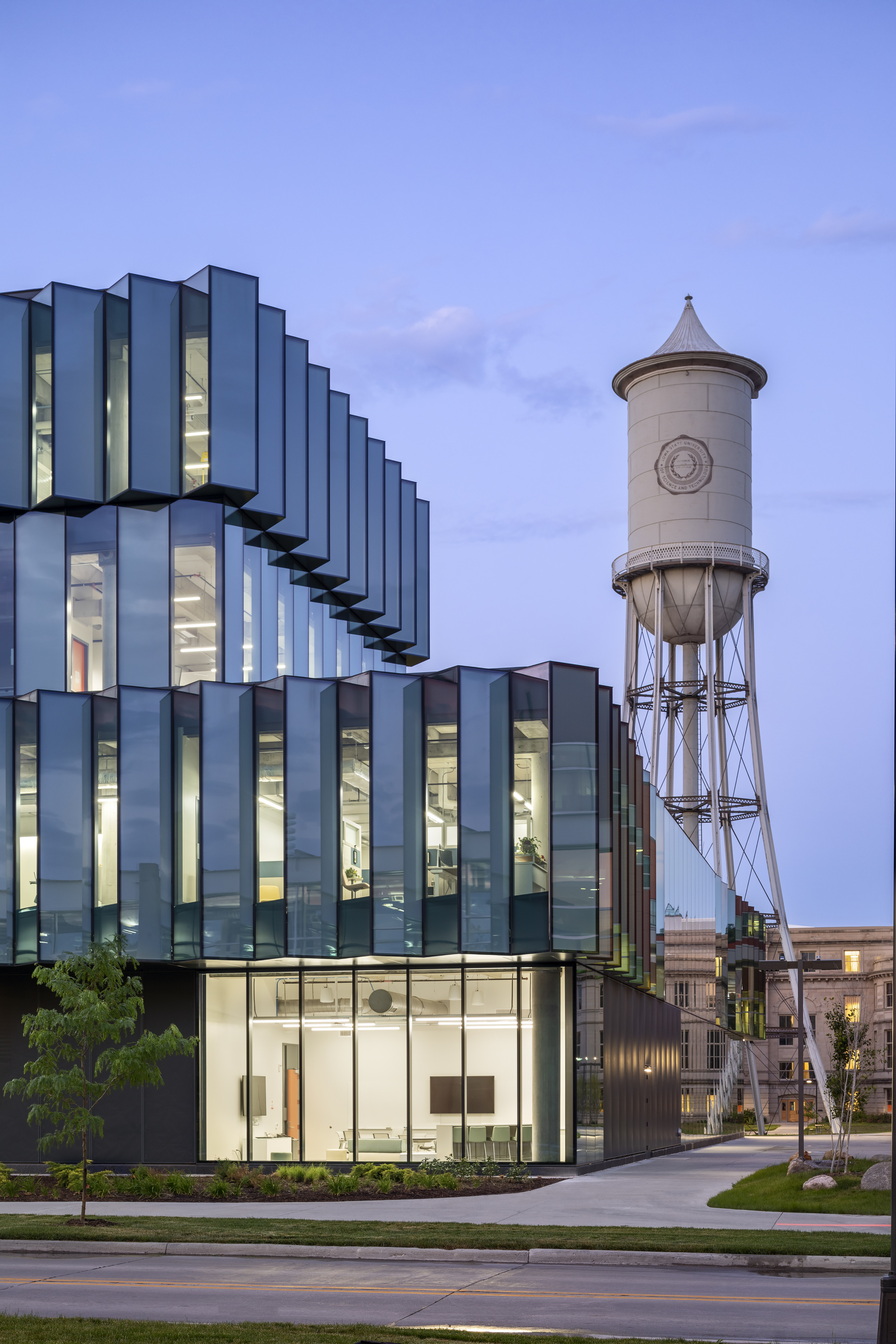How can an interdisciplinary building empower students to innovate through collaborative exploration while remaining flexible to changes in technology and pedagogy?
Visual access between spaces is a key feature of the Student Innovation Center. Glass walls, open spaces, and daylight promote collaboration through visual connections. | © Peter Aaron/OTTO
Iowa State University is a public, land grant university known for its strong engineering programs and commitment to hands-on learning. To further strengthen its multidisciplinary culture of innovation, the University needed a high-quality, centralized space for undergraduate students to explore ideas outside the bounds of conventional curricular structures. The Student Innovation Center provides a flexible, dynamic space that encourages around-the-clock experimentation, collaboration, and free exchange of ideas.
A Shared Space
The concept of the Center is unique and had no precedent at the time of design in 2016. To design a building that truly supported the needs of students, the team created an in-depth discovery process to gather feedback from more than 4,000 students, 50 faculty in six colleges, and dozens of professional staff, including university leadership. Key concepts such as visual connectivity between spaces emerged as project aspirations and became defining characteristics of the Center. As a result, a central atrium and adjacent courtyard create visual connections between interior and exterior spaces. These moments of simultaneity suggest potential collaborations and encourage students to expand beyond their disciplines.
The iconic Marston Water Tower stands adjacent to the Student Innovation Center. The green roof will grow to host a diverse community of native flora and fauna that both compliment and support the regional prairie ecosystem while cooling campus. | © Peter Aaron/OTTO
A Striking First Impression
The Center's facade makes a striking first impression as the pleats develop and transition from three dimensions to two. The facade expresses the dynamism of the program and is juxtaposed against the resilience of the maker spaces inside. This intentional dichotomy establishes a dialogue between the act of making and the results of the endeavor. The facade is also performative. Solar heat gain due to incident radiation is reduced by one-third because of the pleats' careful orientation. This facade, coupled with high efficiency heat recovery, greatly contributed to the Center's LEED Gold certification.
The Center is flexible as a rule. This was a priority for the university that is acknowledged in the Special Projects component of the building program. Intended to change per semester, Special Projects spaces are open areas that place student work on display and throughout the building. Flexibility is also in the DNA of the building itself. Through the use of raised access flooring, the team was able to conceal infrastructure in a plenum and facilitate the relocation of partitions above the assembly without revision to building systems.
Activity defines the character of each floor. A glassblowing studio in the first floor's atrium, home to the university's Gaffer's Guild, sets the tone of the building's hands-on, collaborative culture. The atrium is the largest public space in the Center, and one of four attractor spaces located across each of the building's levels that draw visitors up and through the building. On the second floor, a sunken courtyard provides a moment of discovery with a semi-private outdoor space and art gallery; on the third floor, a demonstration kitchen and food-producing terrace offer respite and space for gathering. A student-run café, SPARKS, and a cantilevered outlook define the building's highest level. With views across campus students enjoy a vantage that inspires.
The pleated facade unfolds across the curtainwall like an accordion, managing solar gain by occluding the south-facing panels of each pleat. | © Peter Aaron/OTTO
Innovation Throughout
The Student Innovation Center achieved LEED Gold despite high energy demands of workspaces, including a glassblowing furnace that operates 24/7. The mechanical systems serving the Center reflect the type of innovation and creative problem solving the facility will help students achieve. Fresh air is filtered continuously, including throughout the welding and woodworking shops, production studios, and paint booths. The air supply system recovers energy to condition the air supply and minimize peak heating and cooling loads and overall energy use.
A spare interior material palette acknowledges the coarseness of the maker spaces within the building, while the high-performing facade reflects precision and professionalism of the discovery within. | © Peter Aaron/OTTO
While the historic 168-foot Marston Water Tower adjacent to the Student Innovation Center rises over the site and campus, the 146,000 square foot building is heated and cooled from campus chilled water and steam. The building's green prairie roof decrease the site's nonporous footprint by replacing it with a permeable landscape, capturing rainwater and mitigating runoff. The project further acts to reduce the impact of stormwater by incorporating below-grade detention designed to ease the burden on an overburdened campus infrastructure.
The building serves as both a gateway and destination on campus, attracting undergraduate innovators, creators, and collaborators across disciplines inside a building that anticipates their needs and supports creativity wherever it grows.


